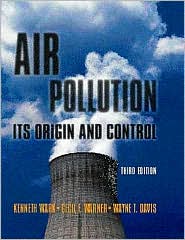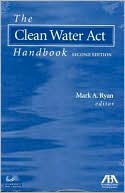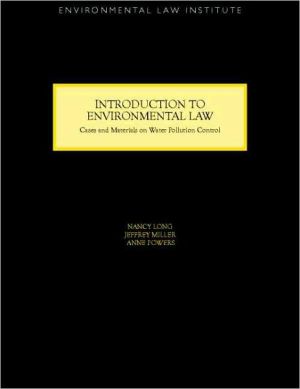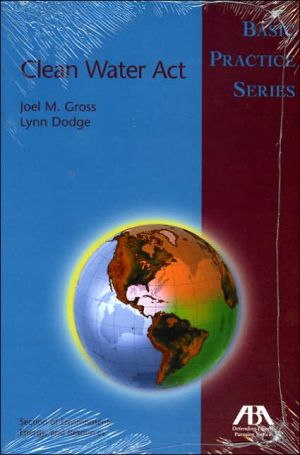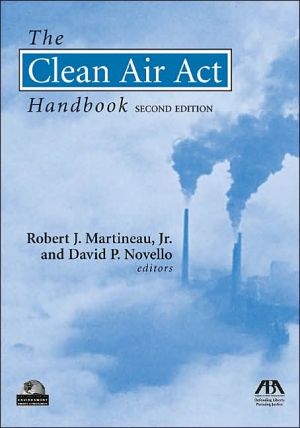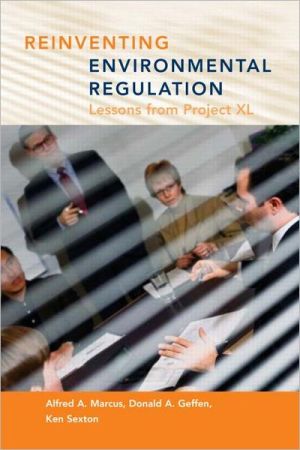Air Pollution : Its Origin and Control
A truly classic air pollution piece, this book is suitable for a variety of engineers and scientists who wish to gain an introduction to the field of air pollution. Known for its detailed development and application of equations, the book emphasizes an understanding of the relationship between sources and control of air pollution, rather than being a simple "handbook" on the subject. The book presents information on four broad areas of interest in the air pollution field; the effects of...
Search in google:
A truly classic air pollution piece, this book is suitable for a variety of engineers and scientists who wish to gain an introduction to the field of air pollution. Known for its detailed development and application of equations, the book emphasizes an understanding of the relationship between sources and control of air pollution, rather than being a simple "handbook" on the subject. The book presents information on four broad areas of interest in the air pollution field; the effects of pollutants on health and welfare; the laws and regulations that have been passed in efforts to improve air quality; the modeling of atmospheric dispersion of pollutants; the approaches to the control of emissions (from both stationary and mobile sources).FEATURES/BENEFITS New material has been added to bring the book up to date on the latest regulations including the Clean Air Act Amendments of 1990. The latest standards for ambient air quality and emission have been included in this revision. The authors continue to expose the reader to both the quantitative and the qualitative aspects of air quality management and air pollution control with several new questions and problems, with SI units emphasized to a greater extent than in the previous edition. The Internet is also introduced as a valuable source of additional information.
The third edition of this text provides a much needed update to the second edition which was published prior to the promulgation of the Clean Air Amendments of 1990. This latest edition has been modified in four broad areas. First, new material has been added to bring the text up to date on the regulations. The Clean Air Act Amendments of 1990 placed increased emphasis on control of emissions from fossil fuel-fired power plants and other combustion sources, and focused more effort on a large number of pollutants new regulated as hazardous air pollutants. These regulations are discussed in detail in this new edition.\ Secondly, many of the ambient air quality and emission standards have become more stringent or more specific since the publication of the second edition and are new being revised on a more frequent basis. These latest standards are included in the text. Examples include emission standards for municipal waste combustors and medical and hazardous waste incinerators, all of which underwent changes during the writing of this edition during the last two years. Another example is the incorporation of particle size specific standards such as the PM1 standard and the PM2.5 standard which address the mass of particles less than or equal to 10 and 2.5 micrometers, respectively. The chapters which cover combustion have been expanded to include more details on understanding combustion, combustion balances, incineration, and control of combustion processes. The chapter on mobile sources has been expanded to include the latest emission standards and the control technologies required to meet the standard.\ Thirdly, new questions and problems have been added (and some older ones removed). This is in keeping with the authors' general philosophy that the reader of this text should be exposed to both the quantitative and qualitative aspects of air quality management and air pollution control. The data for these problems are presented in both conventional English units and SI units. SI units are emphasized to a somewhat greater extent than in the second edition. However, a student in the air pollution field must be conversant with a large set of diverse engineering units. To minimize this problem, Appendix B contains conversation tables for a number of units commonly used in the field.\ Lastly, this edition introduces the use of the internet a valuable source of additional supplemental information. Specific references have been included to direct the reader to many of the sources which are available on the World Wide Web, such as the U.S. EPA Technical Transfer Network Bulletin Board System (TTN-Web). Dr. Wayne T. Davis, the new third author of the text, and primary contributor to this edition, has established a Web page which provides hot links to sources of information that are of particular value to the text. The authors encourage students to use the Web page and welcome comments or suggestions which might enhance the use of the text. The Web page can be accessed at http://funnelweb.utcc.utk.edu/~wtdavis/.\ It is our intent that the text be suitable for a variety of engineers and scientists who wish to gain an introduction to the field of air pollution and its management and control. An understanding of the fundamentals of thermodynamics is assumed, including some knowledge of chemical equilibrium for ideal-gas mixtures. The principles of chemical kinetics required to understand more fully the origin and persistence of numerous pollutants are presented in the text, before presenting the control methods involving absorption.\ The new edition continues to present information on four broad areas of interest in the air pollution field: (1) the effects of pollutants on health and welfare, (2) the laws and regulations that have been promulgated in an attempt to achieve and maintain acceptable ambient air quality, (3) the modeling of atmospheric dispersion of pollutants, and (4) the general and specific approaches to the control of particulate and gaseous emissions-small and large scale, mobile and stationary, combustion and noncombustion. The mechanisms responsible for the effectiveness of each control device are discussed in some depth.\ As with previous editions, the instrumentation required for the accurate and reliable monitoring of pollutants is covered briefly, since innumerable articles and books are available on the subject in the current literature. In addition, no attempt has been made to present complete coverage of the air pollution control field. The space devoted to any particular topic and the omission of other topics are mainly choices of the authors after input from various reviewers and users of previous editions. New method of control and measurement are constantly being introduced; new or modified laws and regulations are continually being promulgated. Only regular perusal of the current literature will enable the reader to keep abreast of the developments in the areas of air quality management and air pollution control.\ The authors express their sincere appreciation to the following faculty members at various universities who assisted in the review of various chapters of this latest edition. They include, in alphabetical order, Dr. Dan P. Chang (University of California, Davis), Dr. Harold M. Cota (California Polytechnical Institute at San Luis Obispo), Dr. Machenzie L. Davis (Michigan State University), Dr. Timothy C. Keener (University of Cincinnati), Dr. Ashok Kumar (University of Toledo), Dr. Thomas J. Overcamp (Clemson University), Dr. George P. Partridge, Jr. (Pennsylvania State University at Harrisburg), and Dr. Mark J. Rood (University of Illinois at Champaign-Urbana).\ Wayne T. Davis Kenneth Wark Cecil F. Warner
PrefaceSymbols1Effects and Sources of Air Pollutants12Federal Legislation and Regulatory Trends613Meteorology1094Dispersion of Pollutants in the Atmosphere1435Particulate Control1886General Control of Gases and Vapors2947Control of Sulfur Oxides and Other Acid Gases4008Control of Oxides of Nitrogen from Stationary Sources4309Atmospheric Photochemical Reactions47110Mobile Sources489App. AInstrumentation535App. BMeasurement Quantities550Answers to Odd-Numbered Problems563Index569
